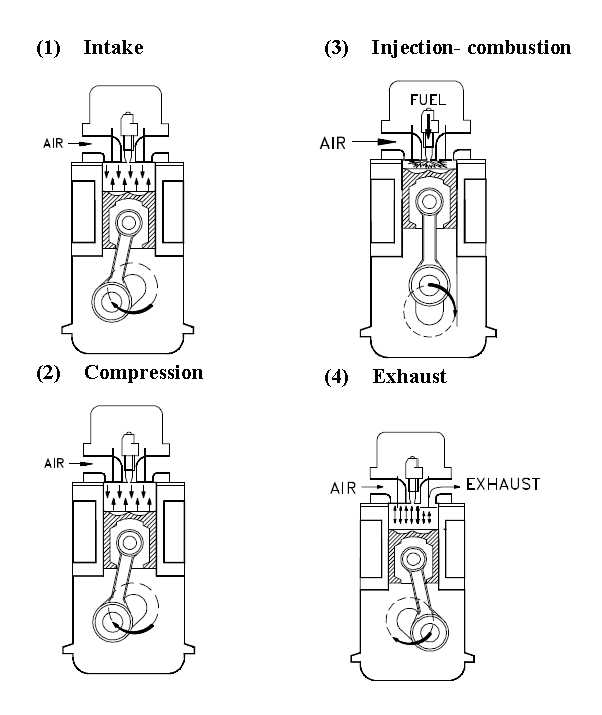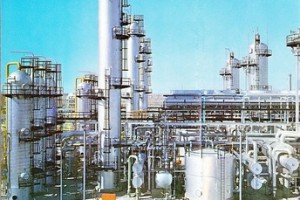A diesel engine is an engine that converts the energy stored in the diesel fuel into useful mechanical energy.
How diesel engines operate
The energy conversion actually takes place in two steps. First, the fuel reacts chemically (i.e. burns) and releases energy in the form of heat in a cylinder equipped with a piston. Then the heat causes the hot gases entrained in the cylinder to expand, and the expanding gases push the piston. The reciprocating motion of piston is then converted into rotational motion through the crankshaft.
Most diesel engines are multi-cylinder engines and their cylinders are typically arranged either in-line or a 'V' type configuration, although other combinations are also available. In an in-line engine, as the name implies, all cylinders are instlalled in a row. In a 'V' type engine, cylinders are arranged in two rows of cylinders, set at an angle relevant to each other and interconnected with a common crankshaft. Each group of cylinders making up one side of the "V" type configuration is typically referred to as a 'bank of cylinders'.
Figure 1 - Typical diesen engine cross section during air intake (piston-cylinder shown at the top, crankshaft shown at the bottom)
Differences between Diesel Engine and Gasoline Engine
- Unlikegasoline engines, diesel engines don't require an ignition system or a spark plug to ignite them. Diesel fuel is injected in the cylinder as the piston rises to the top of its compression stroke. When fuel is injected, it vaporizes and self-ignites due to the heat created by the compression force.
- Unlike gasoline engine, which can limit the amount of air entering the engine through the butterfly valve of the carburator, the air amount entering the diesel engine is always maximum. Therefore, the diesel engine speed is limited only by the amount of fuel injected in the cylinders.
Types of diesel engines
Two types of diesel engines are in use nowadays: two-stroke cycle engines and four-stroke cycle engines (the word cycle refers to any operation or series of events that repeats itself).
A stroke in the engine refers to the distance travelled by the piston from the top of the cylinder to the bottom. For a diesel engine, the highest point of travel by the piston is called top dead center (TDC), whereas the lowest point of travel is called bottom dead center (BDC). There are 1800 of travel between TDC and BDC, or one stroke.
Despite their different characteristics, both types of diesel engines must go through the following four (4) stages: intake, compression, fuel injection-combustion, exhaust.
Intake: The piston is located near BDC. The intake valve or port open up and the fresh air is taken in. The exhaust valve or port remains closed while air intake is completed.
Compression: Once the piston passes BDC, the intake valve closes and the piston starts going upwards up to TDC.
Fuel injection-ignition: As the piston approaches TDC, the fuel is injected through dedicated fuel injectors. As the piston moves towards TDC air and fuel mixture is compressed leading to heating and combustion of gases inside the cylinder. Gases expanding due to the combustion heat force the piston to move downwards towards BDC. This reciprocating motion of piston between TDC and BDC is converted to rotating motion by the crankshaft.
Exhaust: As the piston passes BDC, the exhaust valve or port opens and exhaust gases are discharged from the cylinder.
The basic difference between two-stroke and four-stroke cycle enginers is that a two-stroke cycle engine requires only two strokes of the piston to complete one full cycle. Consequently, it requires only one rotation of the crankshaft to complete a cycle. In the case of a four-stroke cycle engine, the engine requires four strokes of the piston to complete one full cycle consisting of - air intake, compression, fuel injection and gas exhaust. Therefore, it requires two rotations of the crankshaft or 720 degrees of crankshaft rotation (360 x 2) to complete one cycle.
Figure 2 - The four (4) stages-events of a typical diesel engine






